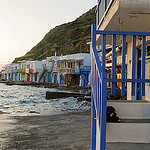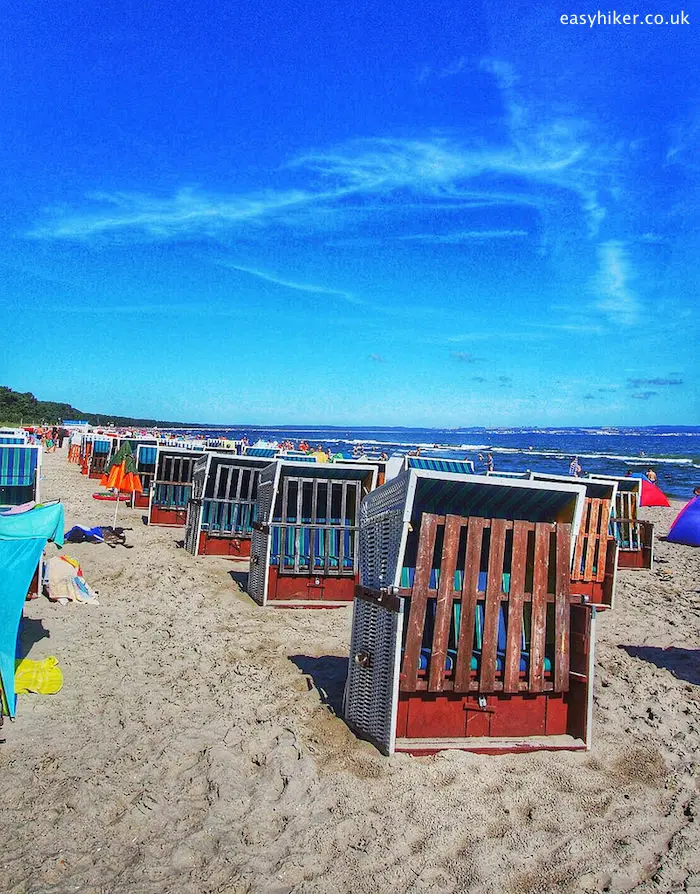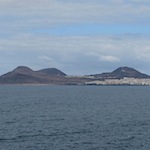If you are travelling to hike in the Calanques National Park, there is a good chance that you will sooner or later pass through Marseille.
Marseille is France’s oldest and second largest city, with a history that includes the Holy Grail and Jesus Christ’s love child (according to the “Da Vinci Code”, at least), La Marseillaise and “The French Connection”, so once you are there, you might as well take a look, if only out of curiosity to see how this may all hang together in the here and now.
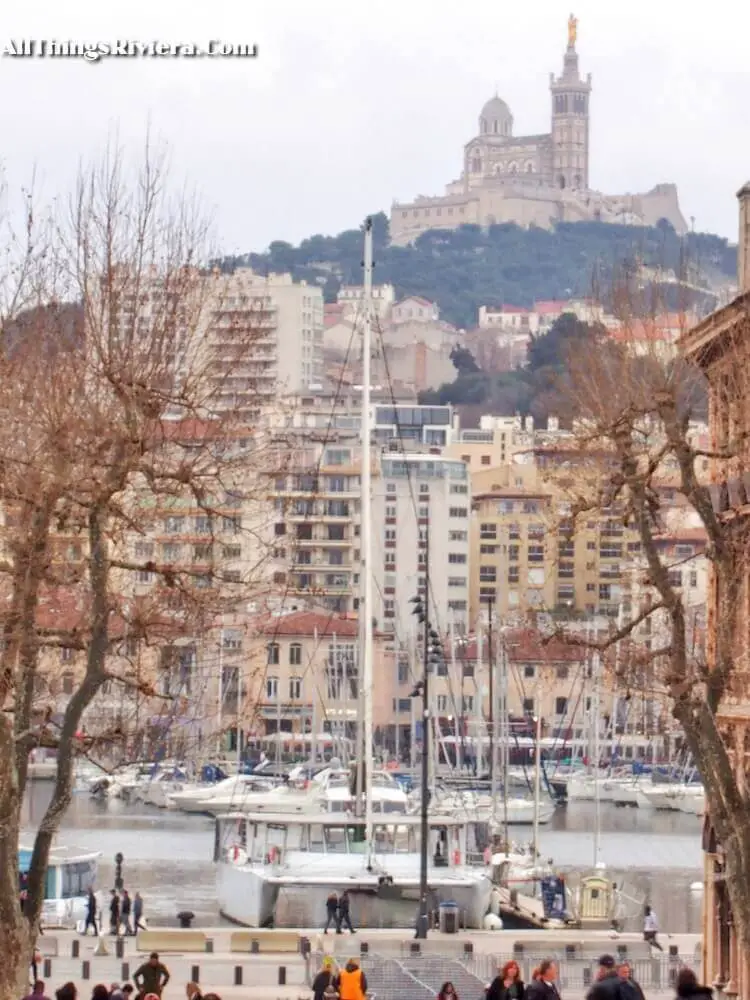
One word of warning, however: Marseille is not a bijou tourism town but a big, bustling and busy seaport.
Neither should you expect a place that is easy to fall in love with, something like Naples or Genoa. Marseille is just as edgy and rough as either of those two while sharing few of their more obvious charms.
The modern City of Marseille has developed around its port, still the largest in France. The Old Port is also the place from where, on a sunny day, you can take a boat trip to one of the near-by islands off the coast and even to the calanques.
Such a boat trip is not the worst way of spending half a day in town: I remember that we enjoyed this very much on our first visit 20 years ago during a weekend in November, travelling south from a far gloomier, autumnal Paris.
Be aware, however, that summer days are often stiflingly hot, while during the winter and the spring, when the Mistral comes blowing down from the mountains, Marseille can be much colder than other, more sheltered parts of the coast.
While it may not be easy to fall in love with Marseille at first sight, it must also be said that the city is not entirely without redeeming features.
How to Pass a Day in Marseille
Here are two suggestions of how to pass a day in the unofficial capital of southern France.
Le Panier just north of the harbour is Marseille’s Old Town, an intricate web of narrow lanes and stairways between the Cathedrale La Major and the Rue de la Republique.
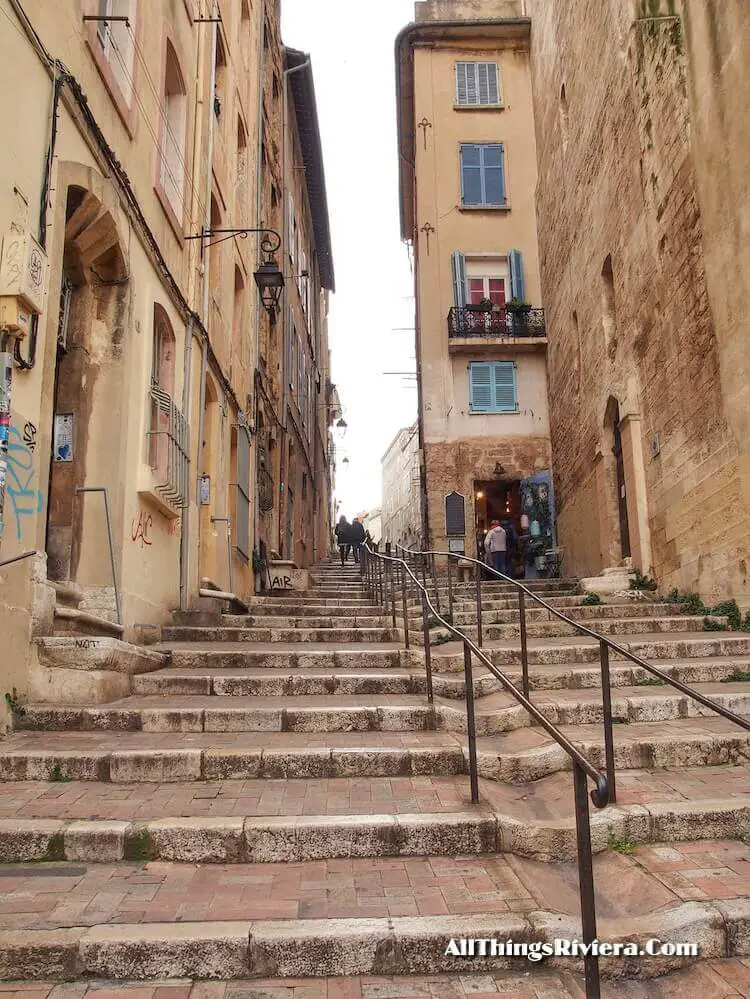
The Panier is not unlike similar quarters around the Mediterranean but has one unique feature: the exceptional density and quality of its street art.
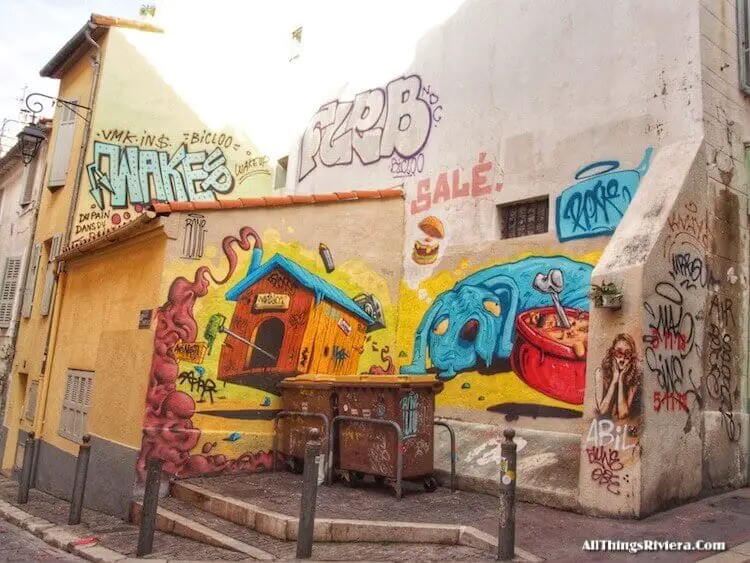
Connoisseurs will recognize the handiwork of some of most famous street artists in Europe …

… but it is not necessary to do that or indeed to know much about the street art scene to have fun.
We recommend to simply walk around, without a fixed route or schedule, letting your instinct carry you from one street corner and one work to the other while enjoying the surprisingly wide range of the art on offer which includes, of course, the graffiti-based urban-aggressive gesture …
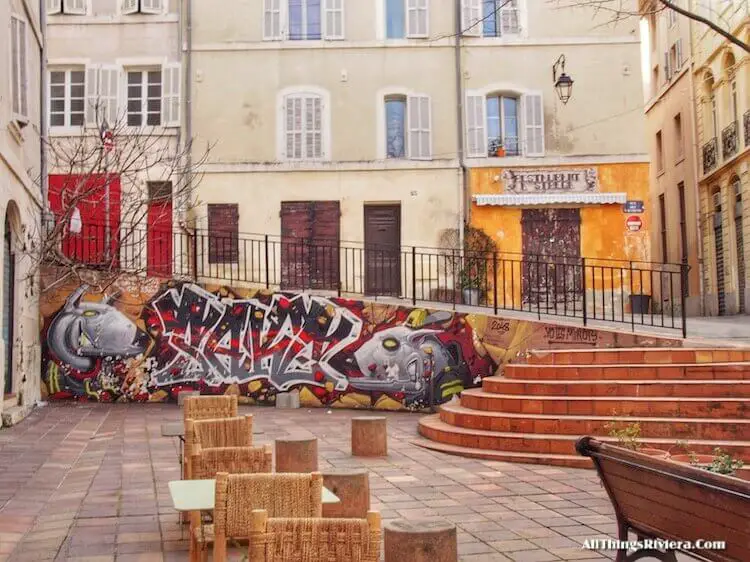
… but also the abstract …
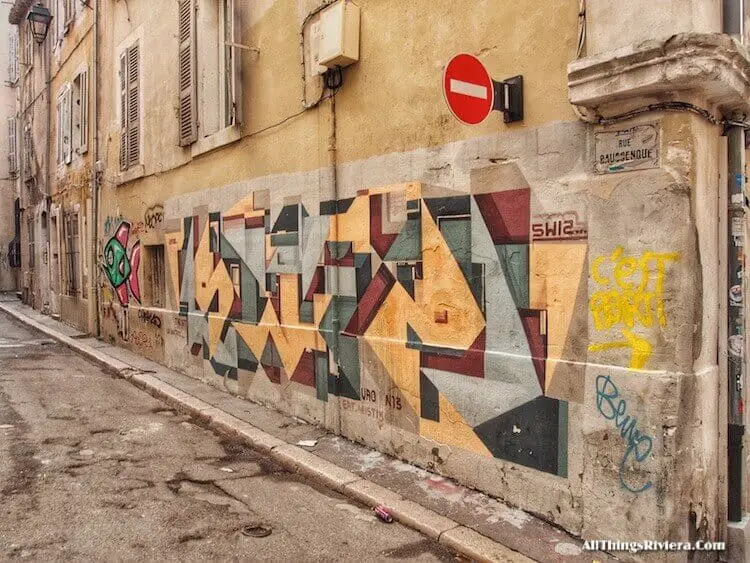
… the gently humourous…
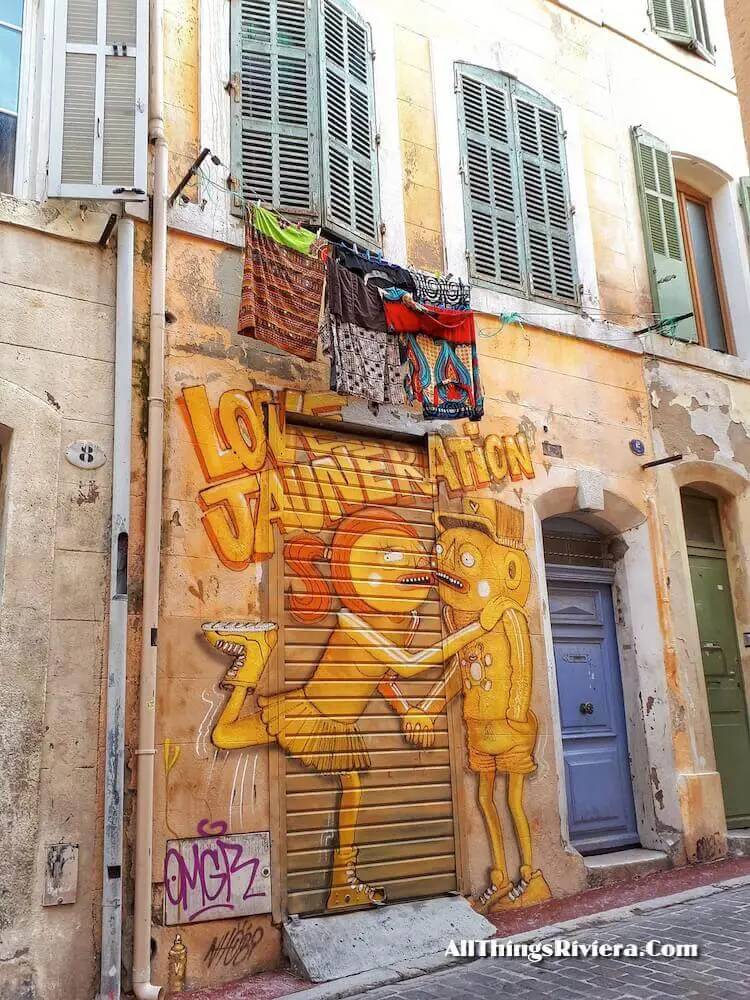
… and the scenic and picturesque: something that would not look out of place in a provincial museum.
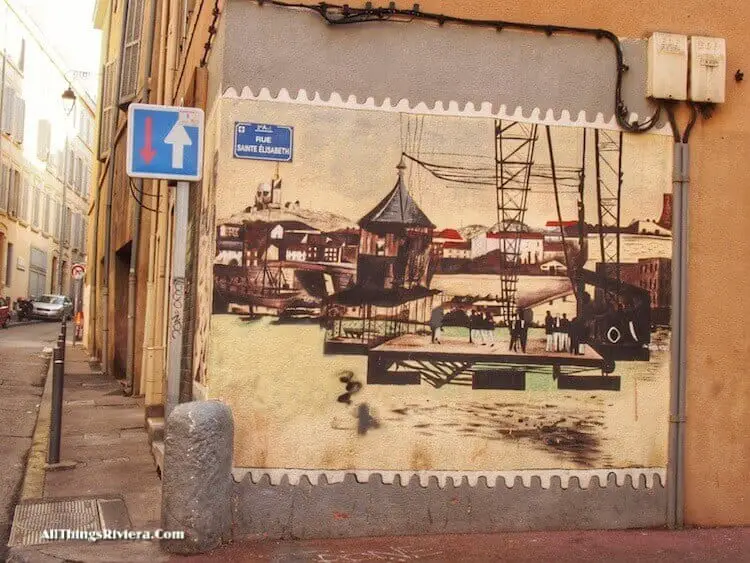
Equally surprisingly, many if not most of the works do not aggressively confront their environment but attempt to blend in with the existing urban fabric, in terms of colour …
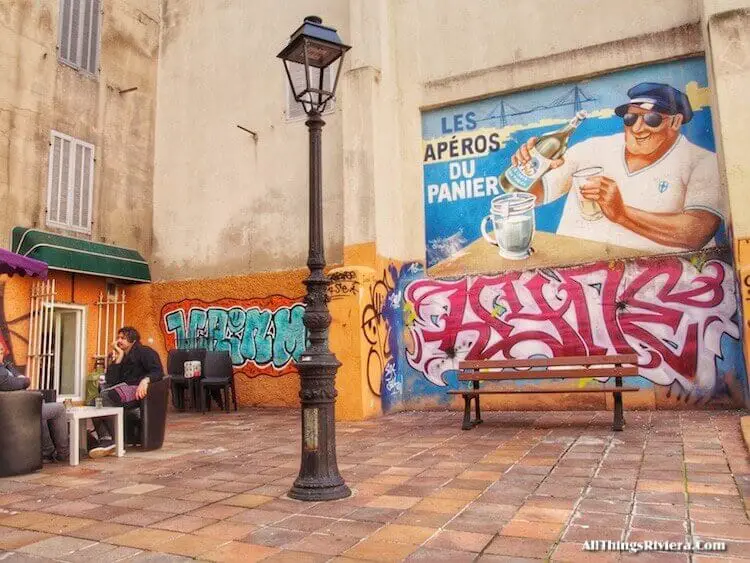
… or tone …
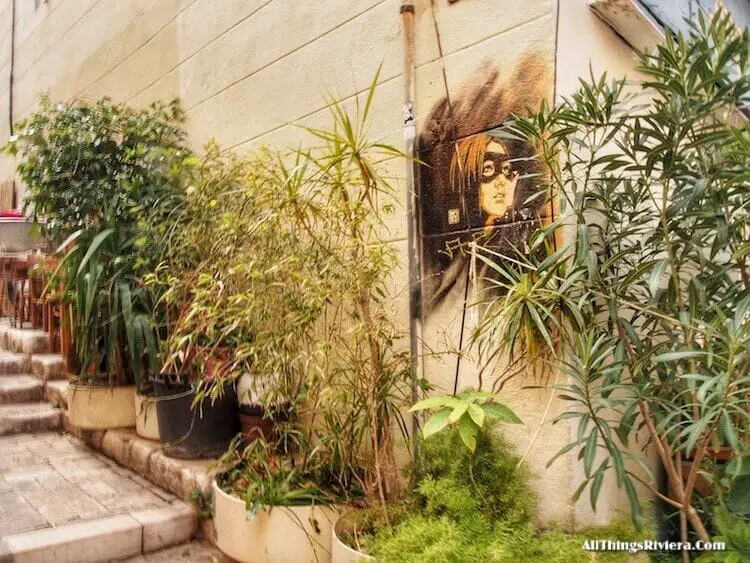
… or both.
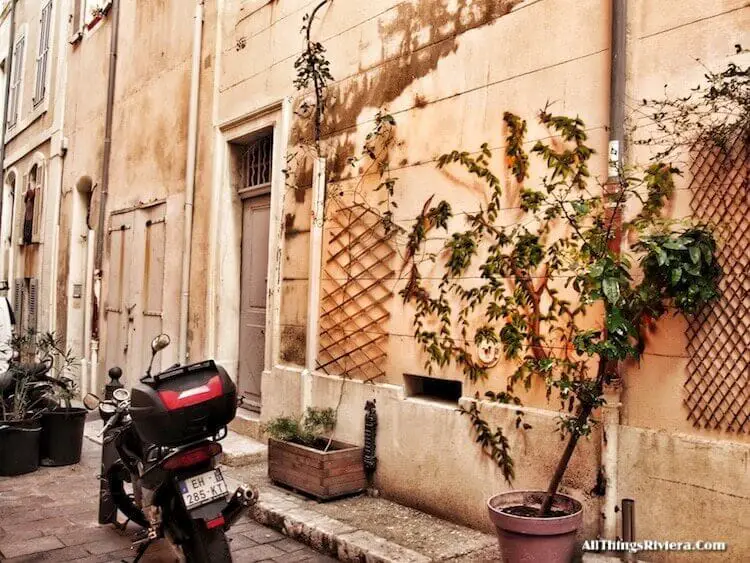
Which is when you have to look twice to find the seams where urban fabric and street art meet.
Some of the paintings are monumental in scale …
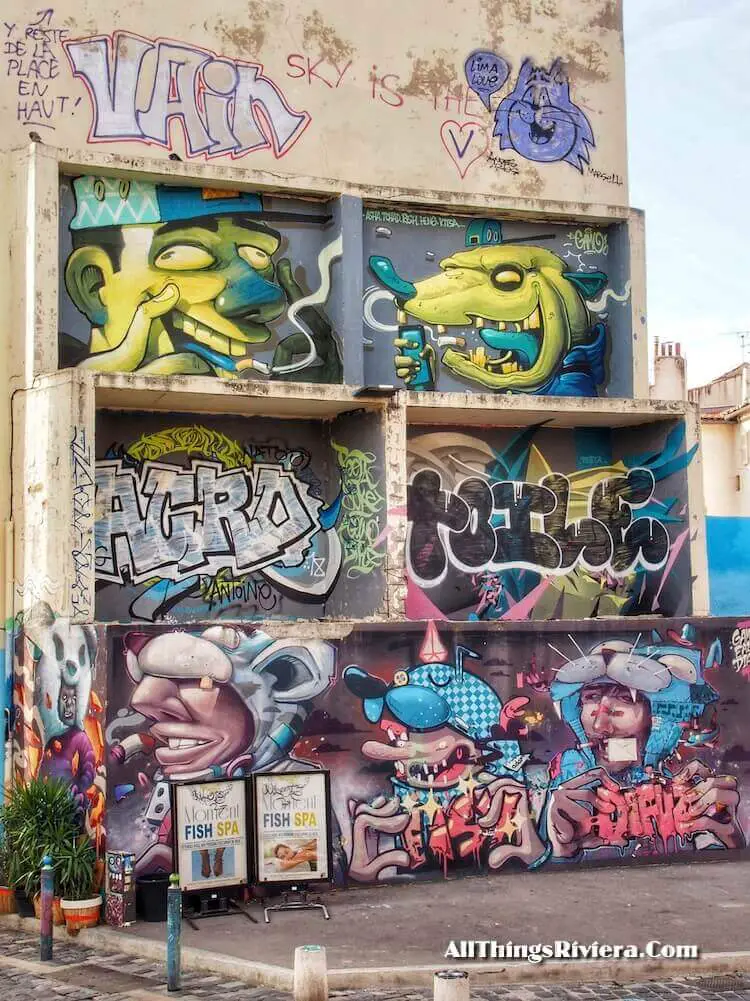
… others more intimate …
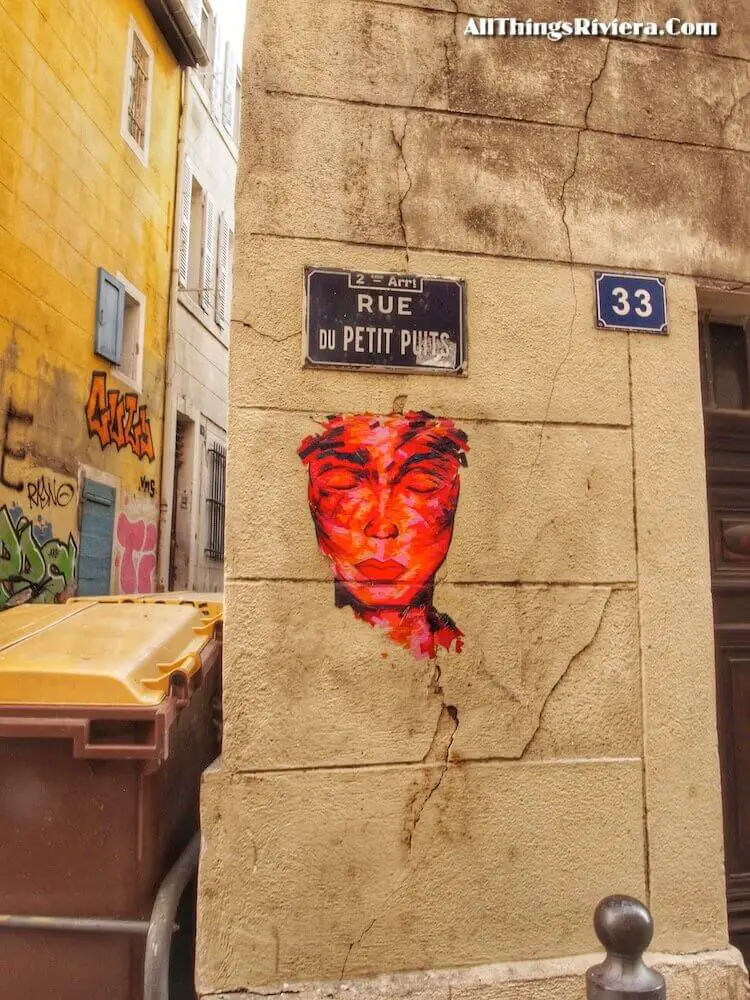
… and some are so „miniaturized“ and modest in their gesture that you can miss them entirely unless you are paying close attention.
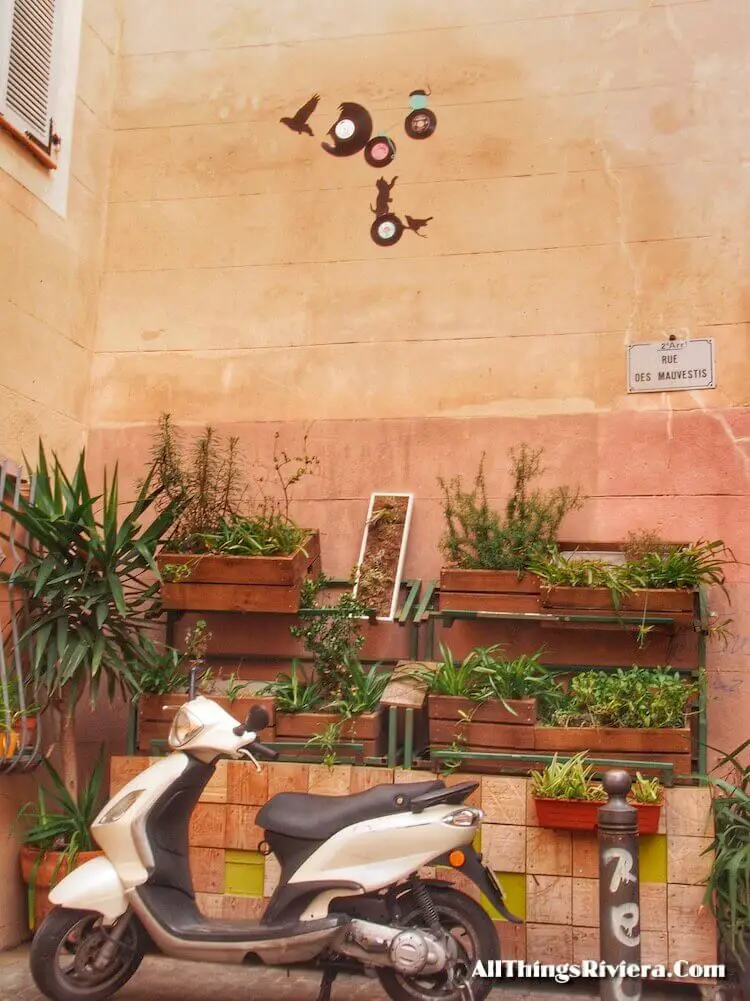
There are many things in the Panier to enjoy and to discover.
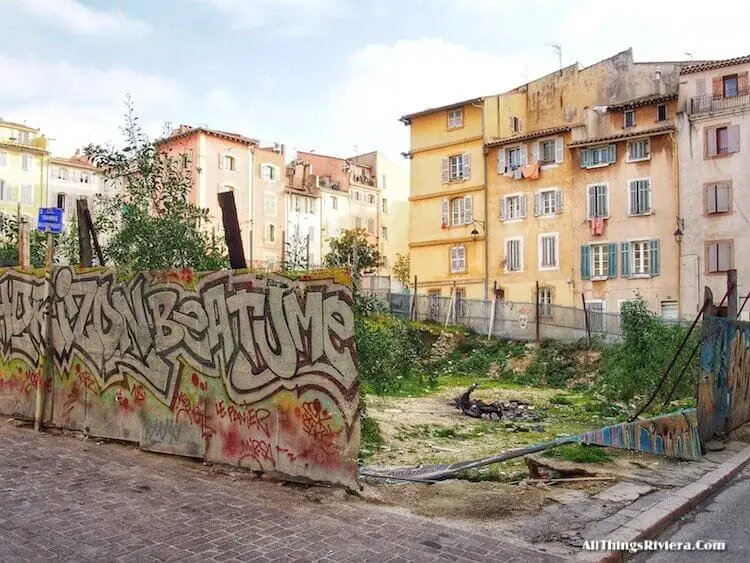
To pass a day in Marseille, we recommend to reserve roughly two hours of your day for a walk around the streets in Marseille’s Old Town.
You can do this in the morning, have lunch in one of the many cafés and restaurants along the way and then, in the afternoon, take a 20-minute walk to the Parc Longchamp near Marseilles St Charles train station.
The arrival from the Boulevard Longchamp provides one of the greatest visual dramas that the town has in store for you …
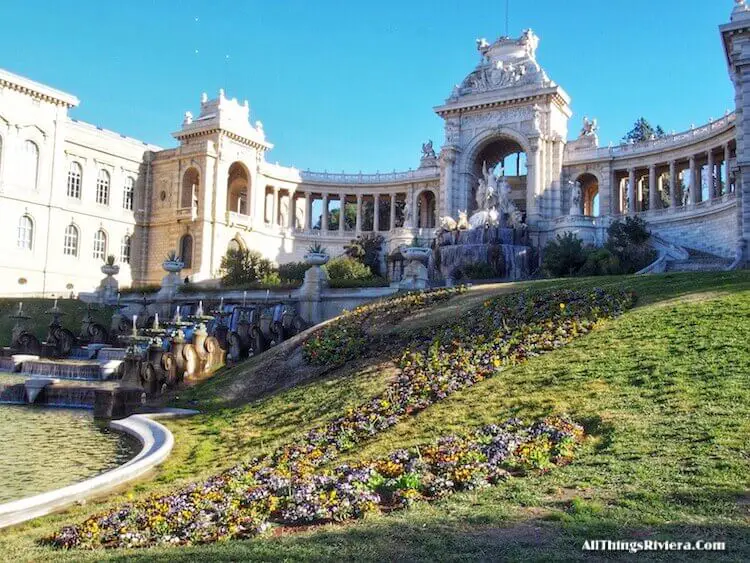
… when the view of the Palais Longchamp suddenly opens up in front of you.
The building was constructed in the middle of the 19th century, officially to commemorate the completion of a canal, but on a deeper level, one feels, to celebrate – with water nymphs, female figures representing Prudence, Virtue and Fertility, and the inevitable bulls – everything that Emperor Napoleon III held dear and wanted to represent.
But walk up the stairways on either side of the fountain and take a look behind the Park’s grand facade: you will quickly realize that the actual park behind the glorious entrance fails to match its grand promise and is small, even a rather scruffy affair …
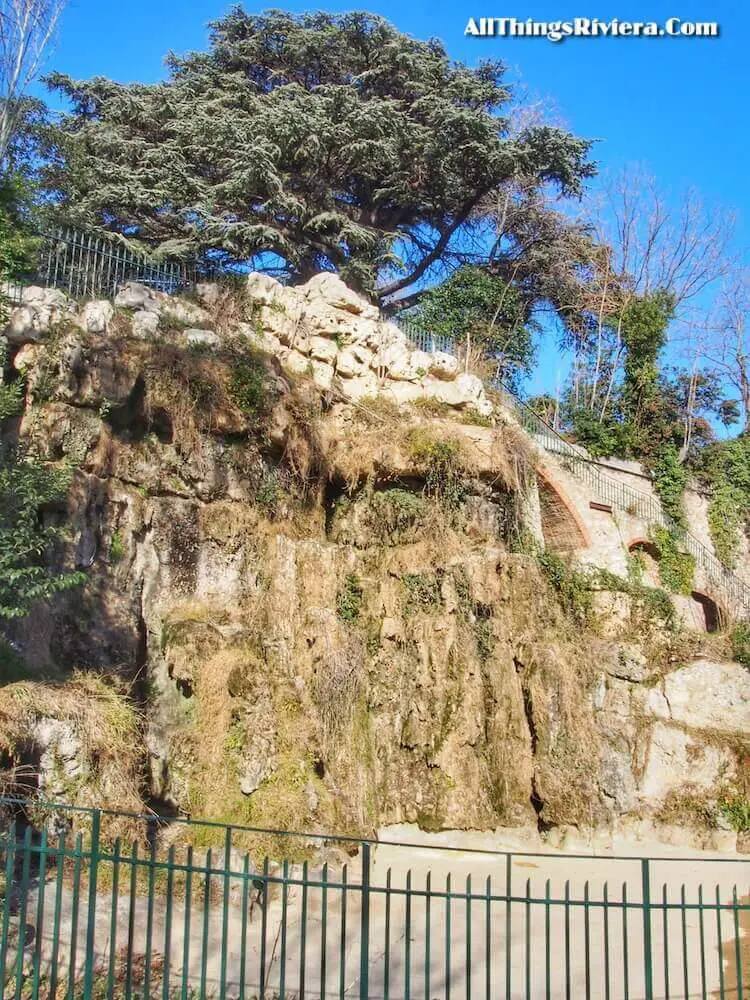
… as though the whole thing was an elaborate hoax, a satirical allegory for the relative weighting of style and substance in late 19th century France and for the Deuxieme Empire’s hopelessly skewed priorities.
The building complex of fountain, museums and park was completed in 1869. The Second Empire collapsed two years later.
Better still is what has since happened to the zoo, one of the park’s original features: while some of its period buildings are still standing …
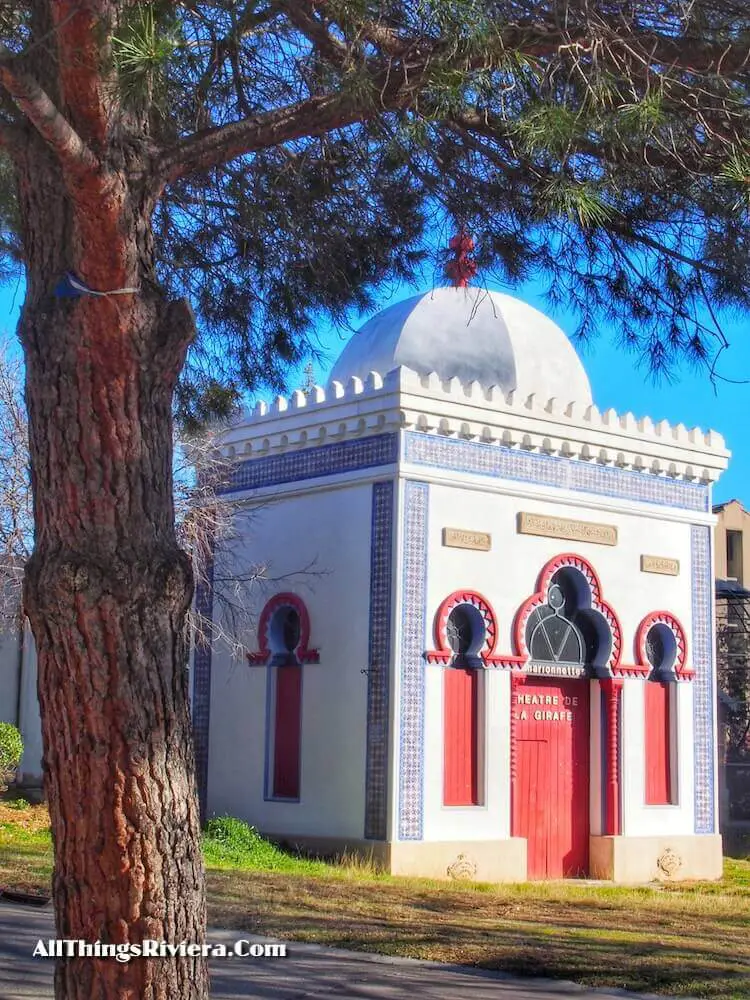
… the animals inside them have been replaced by garishly coloured plastic effigies, …
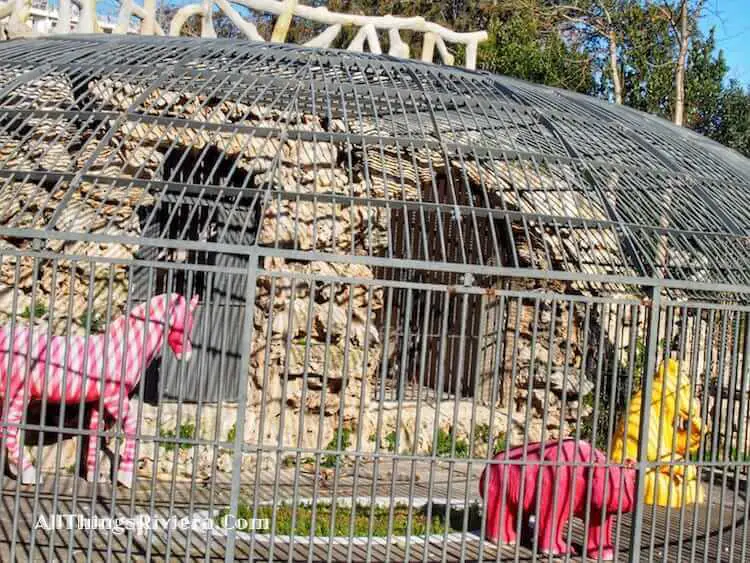
… which, after the Panier’s gritty urban realism, throws an element of surrealistic fancy into the townscape’s mix.
Marseille may not be easy to fall in love with, but it certainly knows how to tell a joke.


